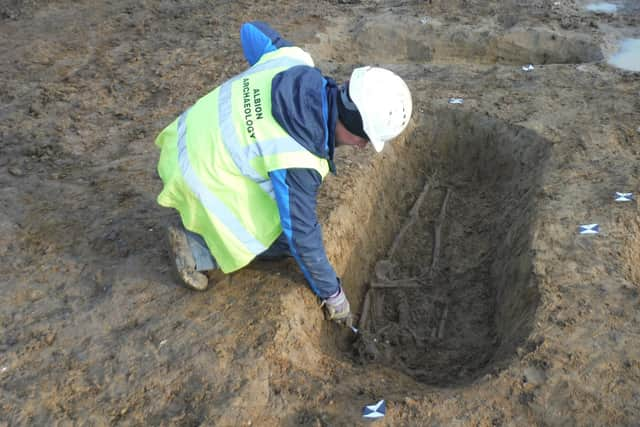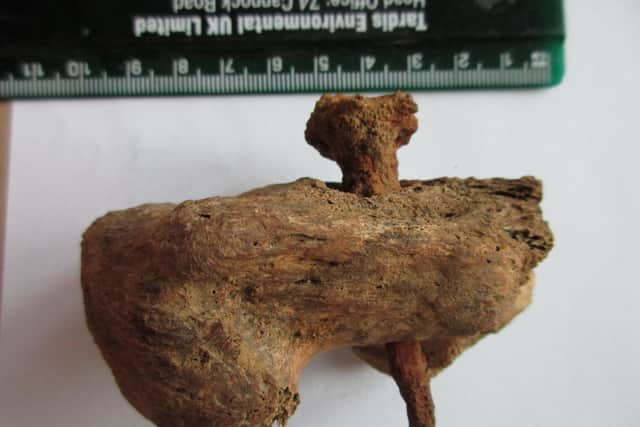Remains of Roman-era man crucified in Cambridgeshire go on display in London
and live on Freeview channel 276
The skeleton of a Cambridgeshire man who was crucified in Roman-era Britain have gone on display at the British Museum in London.
Amazingly, the body is only the second confirmed example of Roman crucifixion ever unearthed, and the first found in Europe.
Advertisement
Hide AdAdvertisement
Hide AdThe unfortunate man’s remains were discovered in 2017 as part of an excavation in Fenstanton by Albion Archaeology.


A nail lodged in the man’s heel proved that the death was a result of crucifixion.
David Ingham of Albion Archaeology led the dig that discovered the Fenstanton Roman settlement.
He said his team was initially invited to attend, just as a formality, “to ensure archaeological investigations were carried out before housing was built on the site.”
Advertisement
Hide AdAdvertisement
Hide Ad“We could never have expected that this routine investigation would lead to a discovery of international significance.” he said.


The incredible discovery became the subject of a BBC4 documentary, The Cambridgeshire Crucifixion, which aired last month (January).
“Most archaeological work is done away from the public eye,” David noted, “so it's great on this occasion that the British Museum and TV company Impossible Factual are helping to spread word of Fenstanton's remarkable Roman past far and wide."
The British Museum’s exhibition, which is called Legion: Life in the Roman Army, shows what everyday life was like for the men, women and children who were forced to live under the domination of the all-conquering Roman Empire.
Advertisement
Hide AdAdvertisement
Hide AdChair of Cambridgeshire County Council’s Environment and Green Investment Committee Councillor Lorna Dupre is proud of our region’s historic treasures.
“We have a wealth of Roman history in our county, with the Cambridgeshire crucifixion one of the highlights of our archaeological collection,” she said.
Once the British Museum exhibition ends, the remains will be transferred back into the guardianship of Cambridgeshire County Council’s Historic Environment Team.
“We are investigating how we can display the notable Fenstanton discovery locally in the future so more people can learn about Roman-era Cambridgeshire,” the Councillor added.
Legion: Life in the Roman Army will run until June 23 in the Sainsbury Exhibitions Gallery of the British Museum.